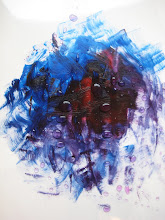
The Sagrada Familia is a roman Catholic church in Barcelona, that has been under-construction since 1882, and is expected to be continue until at least 2026. It is one of the most famous works by Antonio Gaudi, who spent the last 15 years of his life dedicated to its construction and design. On subject of the extremely long construction period, the church consists of a very complicated design, and the project keeps running out of money, as it is privately funded. Also, Gaudi intended it to be built over a long period of time, saying, "My client is not in a hurry". He also wanted it to be the "last great sanctuary of Christendom". To me, and I'm sure many others, the fact that its been taking so long to build is the most interesting and fascinating part of the church. Although it was common for churches in old times to be built over such a long period, its not anything you're likely to come across today.
Every part of the church is filled with christian symbolism. There are 18 tall towers, representing the 12 Apostles, 4 Evangelists, the Virgin Mary, and the tallest represents Jesus. There are two main facades of the church. The entrance is on the Nativity facade, which was the first to be built and the only one completed in Gaudi's lifetime. This facade mainly shows Jesus' birth, childhood, and young manhood. All done in gothic style It faces the east, where the sun rises, symbolizing the birth of life.
The Passion facade was my favorite part of the design. From the many churches I have visited, I've never seen one that was done in this style. Most churches I've seen are either in renaissance or gothic style. The style here however most resembled Cubism, where all the sculptures were very modern looking, but represented ancient ideas. Gaudi only left the decorative part of this side annotated, and expected that future generations would make interventions on it according to the aesthetic tastes of the time. It is called the Passion Facade because it represents the Passion of Jesus. It Showed his pain, sacrifice, and death. These were expressed in a highly dramatic and emotionally intense sculpture groups. This side faces the west and receives the last rays of the sun. This heightens the symbolic effect of darkness and shadows that much added to the feeling of sadness while observing the last and hardest years of Jesus' life.
I have visited this this church twice, 5 years ago, and then again this summer. It was really interesting to see the developments made over the years. I would love to come back to it in about 20 years time and see it completed.


No comments:
Post a Comment